Wirthman Building (1917-1997)
Introduction
Text-to-speech Audio
Better known for the Isis Theatre, the Wirthman Building was built in 1917 by successful druggist Joseph Wirthman. Originally the site of Wirthman’s private residence, when the commercial district along Troost began growing, he replaced the home with a two-story structure. The iconic Isis Theatre opened in August 1918 and was in operation until 1970. In 1922, three stories were added to the building creating office spaces, one of which housed Walt Disney’s Laugh-O-gram Studio for a short time. Due to economic hardship, the area became blighted over the years, however, a few businesses continued to occupy the building until its demolition in 1997.
Images
The Wirthman Building and Isis Theatre c. 1940. Courtesy of Missouri Valley Special Collections, Kansas City Public Library.
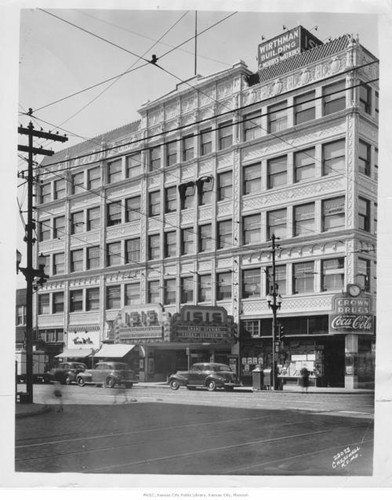
The Wirthman Building was built in 1917 as a two-story building. The Isis Theatre opened in 1918 and the top three floors were added in 1922.Courtesy of Missouri Valley Special Collections, Kansas City Public Library.
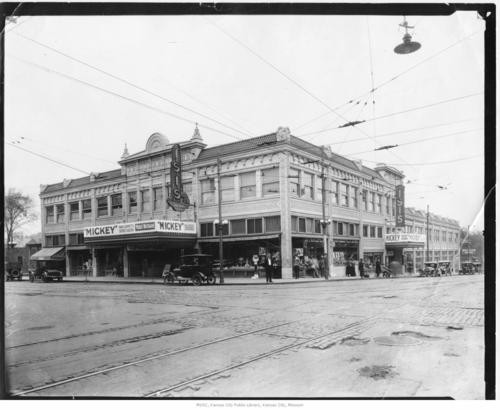
The Wirthman Building was built with extravagant features, prompting the nickname for the Isis Theatre "The Irresistible." Courtesy of Missouri Valley Special Collections, Kansas City Public Library.
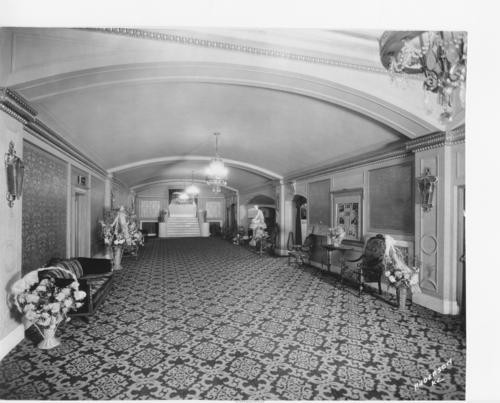
Owner of the Wirthman Building Joseph Wirthman (left) with Jack Rieger (right). Courtesy of Missouri Valley Special Collections, Kansas City Public Library.
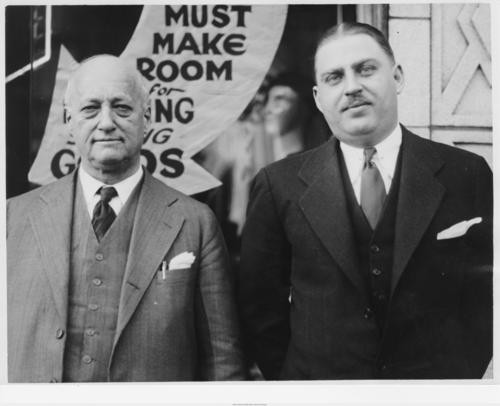
Mansions of the wealthiest Kansas City residents once lined Troost Avenue from 31st to 34th Street, becoming known as "Millionaire's Row".
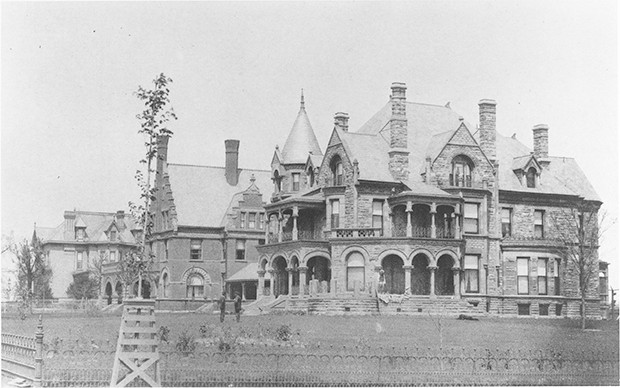
Sanborn Fire Map volume 3 (1896-1907) shows large homes lining Troost Avenue. Courtesy of Missouri Valley Special Collections, Kansas City Public Library.
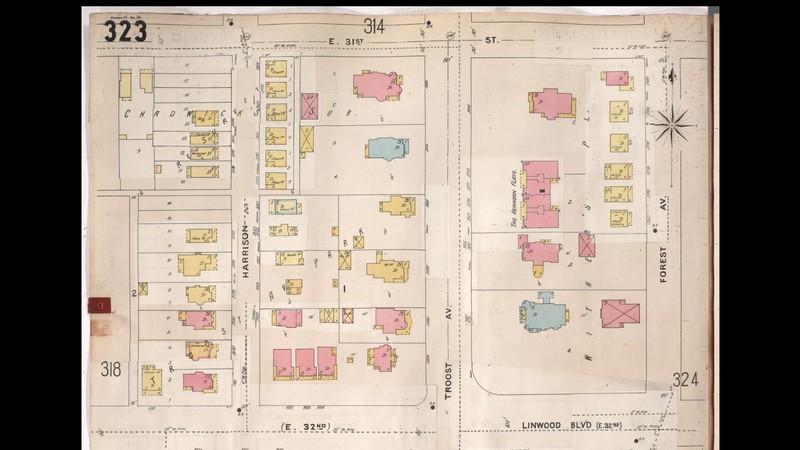
Sanborn Fire Map volume 4 (1909-1950) shows the once-bustling Troost Avenue district. Courtesy of Missouri Valley Special Collections, Kansas City Public Library.
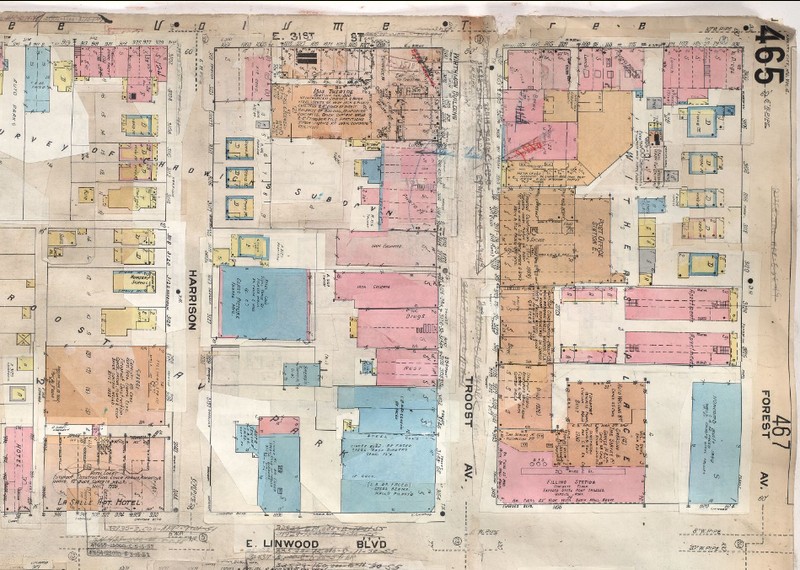
Backstory and Context
Text-to-speech Audio
In the early 1900’s, successful drug store owner and city councilman Joseph C. Wirthman moved into his personal residence here, at the corner of 31st Street and Troost Avenue. At the time, this area was out of city limits and housed the wealthiest residents of Kansas City. Troost was lined with mansions from 31st to 34th street and became known as “Millionaire's Row.” An economic depression in the late 1890’s caused a scare with the banks, housing prices dropped, and some homeowners fled west toward the state line to newly developed neighborhoods. As a result, the less-affluent moved in. However, the entire city was experiencing a population surge and by 1920, Troost Avenue became a center of minority-owned commerce and social activity. This area became highly desired with new schools, churches, banks, retail shops, theaters, and the last stop of the streetcar.
Wirthman did not anticipate the rapid growth of the area and in 1917, he demolished his home to build a commercial building. Originally designed to be six stories, the two-story building appeared monumental, constructed using Egyptian style architectural elements. The most notable tenant of the Wirthman Building was the Isis theater, which opened on August 21, 1918. Storefronts ran along 31st Street and by 1920, the building housed Louise W. Winter Millinery Shop; Mary Lane Dry Goods; the Humfeld-Orear Floral Company; Dinty Moore’s Restaurant; the Baldwin Piano Store; the Isis Cafeteria, in the basement; and Monkey Steam Dye Works. Three floors were added in 1922 and in addition to the street level shops, the expansion of the Wirthman Building offered office space, generally for doctors and dentists. In June 1923, Walt Disney moved his struggling Laugh-O-gram Films studio here but filed bankruptcy in July and left Kansas City.
The Troost Avenue commercial district continued to flourish over the years. However, due to restrictive covenants and poor lending practices to people of color, Troost became a racial and economic dividing line. Despite the 1954 ruling in Brown v. Board of Education which outlawed segregation in schools, the city redrew district boundaries with Troost being one of them. Many of the white families left in the neighborhood moved west and the social and economic divide greatly affected businesses. Over the years the area became blighted. The diminishing audiences of the once popular Isis Theatre resulted in becoming an adult-film theater in 1968 and closing in 1970. Some businesses continued to occupy the Wirthman Building but the entire structure was razed in 1997. Today this location is the site of a busy public bus stop. A mural fills the side of the building next door and honors the culture once experienced here.
Sources
Do you Remember the Wirthman Building and the Isis Theater?, Midtown KC Post. October 26th 2015. Accessed April 6th 2022. http://midtownkcpost.com/do-you-remember-the-wirthman-building-and-the-isis-theater/.
Troost Avenue, Kansas City Public Library. Accessed April 6th 2022. https://kchistory.org/image/troost-avenue-7.
O'higgins, Briana. How Troost Became a Major Divide in Kansas City, NPR. March 27th 2014. Accessed April 6th 2022. https://www.kcur.org/community/2014-03-27/how-troost-became-a-major-divide-in-kansas-city.
Viets, Dan. Burnes, Brian. Walt Disney's Missouri: The Roots of a Creative Genius. Edition Illustrated. Kansas City, Missouri. Kansas City Star Books, 2002.
https://kchistory.org/image/isis-theater
https://kchistory.org/image/isis-theater-1
https://kchistory.org/image/isis-theater-2
https://kchistory.org/image/joseph-wirthman-and-jack-rieger
http://midtownkcpost.com/midtown-millionaires-row-31st-troost/
https://kchistory.org/image/sanborn-map-kansas-city-vol-3-1896-1907-page-p323
https://kchistory.org/image/sanborn-map-kansas-city-vol-4-1909-1950-page-p465
